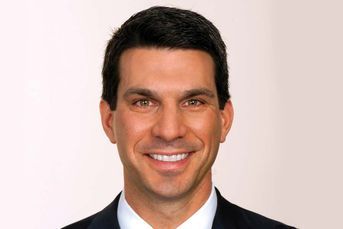SEC muddling ad rules, critics say
At a time when mutual funds are under fire for hyping their ads, federal regulators are considering a…
At a time when mutual funds are under fire for hyping their ads, federal regulators are considering a new rule that critics say could leave investors even more vulnerable to misleading claims.
The proposal could not only give companies more leeway to tout funds — by moving away from prospectus-based ads — but also could change liability standards, making it harder for investors to sue for damages.
“The great concern is that there’s a tradeoff,” says Joseph Franco, a former Securities and Exchange Commission lawyer who teaches at Suffolk Law School in Boston.
“On the one hand, [SEC] Chairman [Arthur] Levitt wants to remove the straitjacket so that the flow of information is less restricted, but the concern is how do you do that without allowing a dilution in the overall quality of that information?”
Much of the recent criticism of mutual fund companies has been focused on ads boasting phenomenal returns — and explaining the reasons in only fine print.
The SEC took Van Kampen Investment Advisory Corp. to task last fall for promotion of its Growth Fund’s 1996 return of 61.99%.
The SEC alleged that the company misled investors in ads and disclosure documents by not revealing the role that high-flying IPOs played in the fund’s performance. Van Kampen agreed to pay $100,000 in settlement, neither admitting nor denying the allegations.
Even though the action was well publicized, many of the 175 or so funds that had triple-digit returns last year have touted the gains, and some have come under fire from Mr. Levitt.
anti-fraud standard
Two weeks ago, he told the SEC staff to scrutinize mutual fund marketing efforts and said that the agency would propose changes to the rule governing performance advertising.
Those changes, a top SEC official disclosed this week, will include a shift away from prospectus-based ads.
“We want to move away from that and just say that whatever is in the ad cannot be fraudulent,” says Cindy Fornelli, senior adviser in the SEC’s Division of Investment Management. “There’s already an anti-fraud standard that we apply to mutual fund ads, but we want to shift the emphasis.
“We think it’s more important that the ads are not misleading, in which case an anti-fraud standard may be a better formulation,” she says.
Ms. Fornelli acknowledges that the change could be viewed as removing restrictions from fund advertising. But she says the SEC will work closely with the National Association of Securities Dealers to ensure the integrity of the ads.
The association, which is updating its own advertising rules, acts as the gatekeeper for mutual fund advertising (see sidebar).
Still, some industry observers believe the changes raise questions about liability standards.
Currently, securities advertising claims are covered by the same standards that apply to prospectuses. Under the Securities Act of 1933, investors may recover damages from funds that simply make misleading statements in their ads.
If ads are no longer prospectus-based, however, investors potentially could recover damages from funds only under a more demanding standard: Rule 10b-5 of the Securities Exchange Act of 1934, which requires investors to prove intent to defraud.
“As with any modification to a rule, we will consider whether our modifications change the standards of liability and whether they should be changed,” Ms. Fornelli says.
Burton Greenwald, a mutual fund watcher in Philadelphia, says the changes also could be difficult to govern.
“It’s pretty easy to decide whether an ad contains required disclosures and other statements,” says Mr. Greenwald, principal of B.J. Greenwald Associates.
“But it’s a leap of faith to go beyond that and say that the manner in which the ad was presented was misleading. I think that will be very tough to administer,” he adds.
Misleading impression
Currently, he notes, ads that technically conform to rules are allowed but “the totality of the impression they create can still be misleading.”
At the Feb. 17 Mutual Fund Directors Education Council, Mr. Levitt zeroed in on funds touting triple-digit returns. “In far too many instances,” he said “these advertisements are offering quick returns or instant wealth — but in reality, have performances that are not sustainable.”
Some fund watchers also share his concerns.
“If you have too many of these sexy ads that attract too many investors who are ultimately disillusioned, you impact not just the credibility of those funds, but the credibility of the entire industry,” Mr. Greenwald says. “The public could start to look at the whole industry dubiously.”
A spokesman for the Investment Company Institute, which represents the mutual fund industry, would say only that the group supports the SEC’s efforts to promote “fair and balanced ads.”
No mutual fund companies returned calls to comment for this story, but some fund officials have also been critical of triple-digit advertisements.
Ms. Fornelli says the SEC receives only occasional complaints about mutual fund advertising. “It’s more been what we’ve observed, rather than people complaining,” she says.
“Obviously the purpose of advertising is to show your product in the very best light,” she continues. “So while some of the ads we’ve seen aren’t fraudulent and don’t break any rule or regulations, some go beyond mere puffery, and they concern us.”
Learn more about reprints and licensing for this article.





